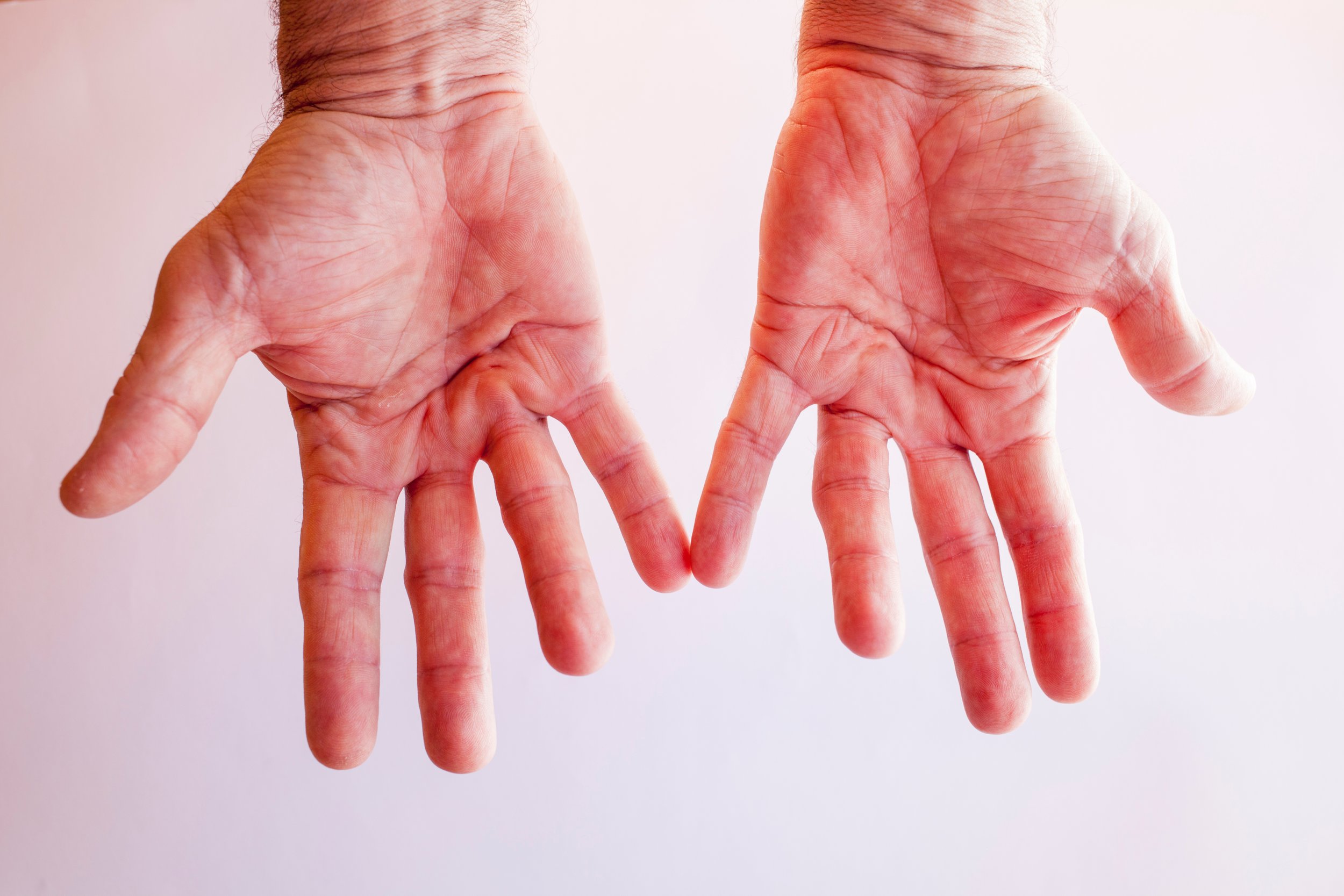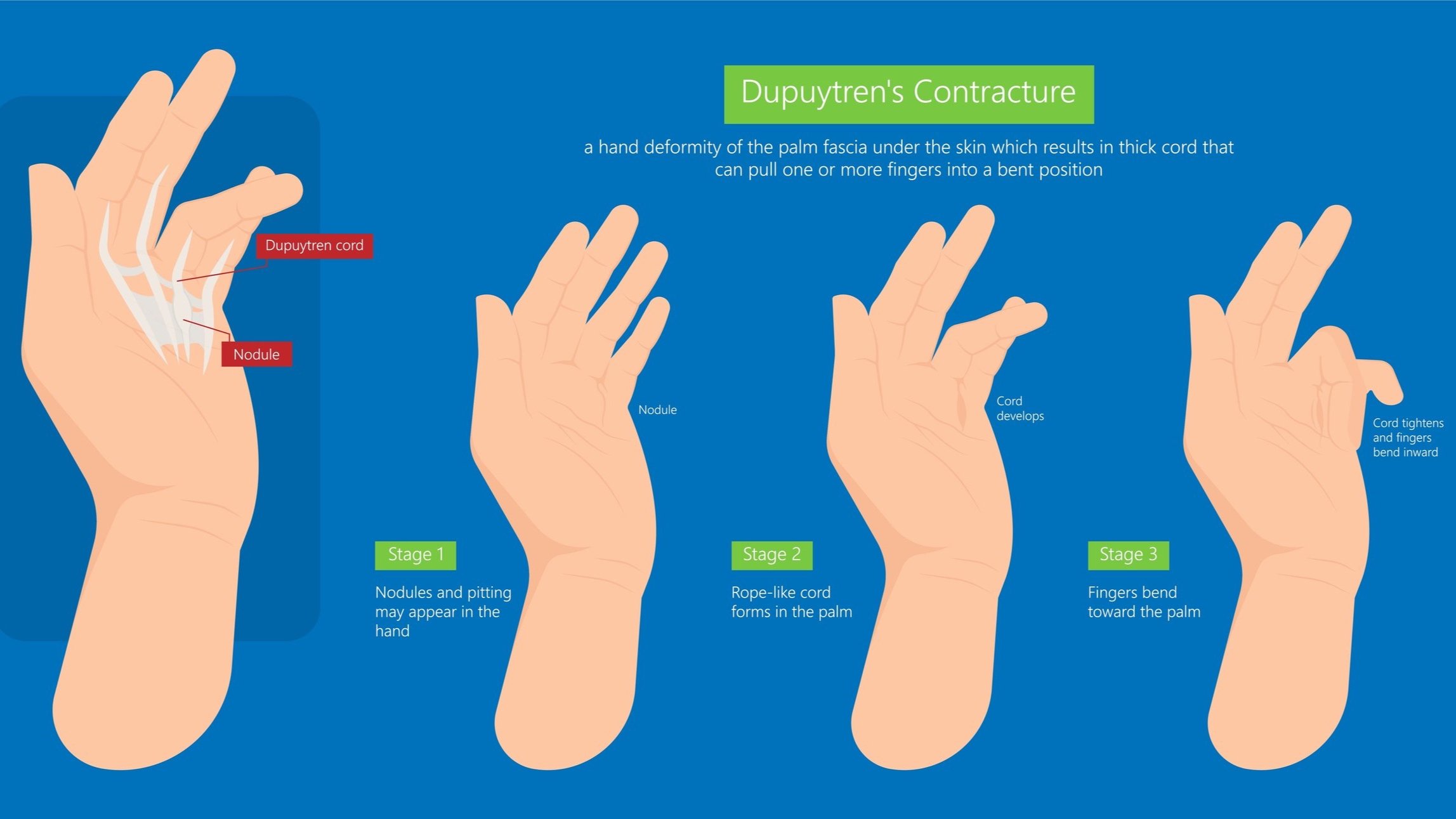
Dupuytren’s Disease
Don’t let Dupuytren’s Disease get in the way of your golf game or your life.
What is Dupuytren's Disease?
Dupuytren's disease is a condition where the thick layer of tissue located between the skin and the tendons of the palm is thickened and/or contracted. Sometimes nodules and cords can be felt as masses on the palm and fingers. This thickened tissue or fascia can contract progressively and produce unwanted bending of the involved finger, limiting the complete extension of the knuckles and the finger joints. As in the hand, the same structures in the foot can be involved.
What are the Symptoms?
Dupuytren’s disease progresses slowly. Usually diagnosed in men over 40 years of age, it may initially exhibit as a small "knot" on the palm of the hand. As it progresses, the formation of hard cords from the palm of the hand to the fingers may start producing bending of the fingers, The most commonly affected are the ring and small fingers. Usually, patients seek medical advice when permanent bending is present and normal use of the hand cannot be obtained.
What Causes Dupuytren's Disease?
The cause of Dupuytren's disease is unknown. It is a non-malignant condition and is usually painless. Hand injuries are not related as a cause of this condition. Dupuytren's disease is more common in males than females and is seen more frequently in patients of Northern European descent. The condition usually runs in families.

What is the Treatment for Dupuytren's Disease?
Dupuytren's disease is a condition of progression. If the disease progresses slowly, causes no pain, and has little impact on your ability to use your hands for everyday tasks, you might not need treatment, instead, you can wait and see if Dupuytren's contracture progresses. You may wish to follow the progression with a tabletop test, which you can do on your own, When you are unable to keep your fingers flat on a table, you should have your hand surgeon evaluate your condition to determine if treatment is necessary.
Treatment options include injections and surgery. The goal of both treatment options is to flatten the contracture and restore normal function of the fingers.
Enzyme (collagenase) injections can be used to soften and weaken the taut cord in your palm allowing your doctor to extend and straighten the contracted fingers.
Surgical correction may also be a treatment option. Surgery is necessary when the contractures prevent the normal function of the hand and fingers involved. Both treatments require splinting to keep fingers straight. In some cases, the condition may recur with time.
Your hand surgeon will recommend which option is more suitable for you.
